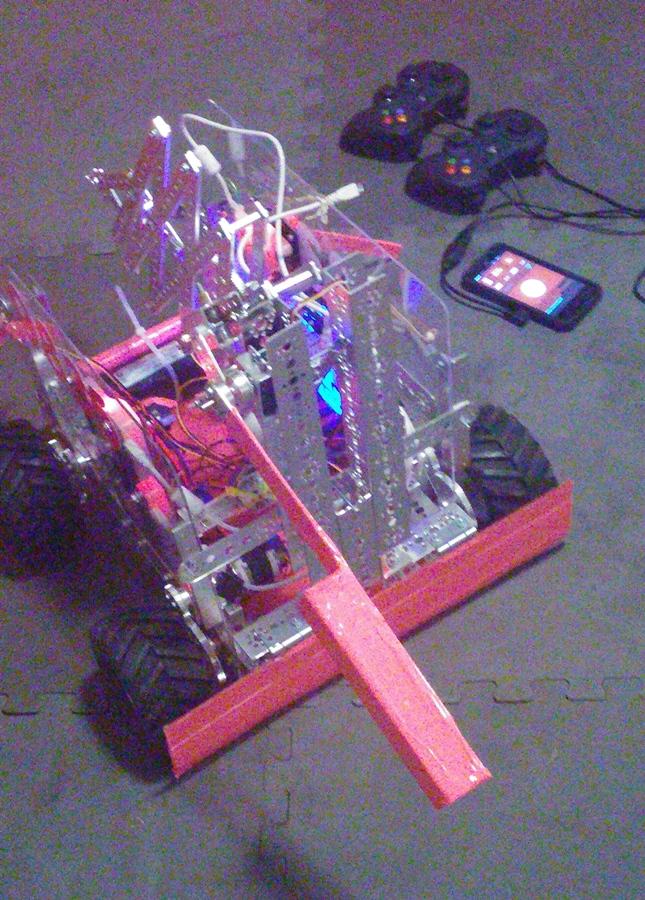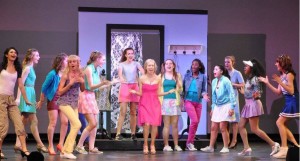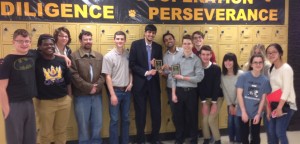Students show divergent ways of advancing technology
March 24, 2016
Sophomore Jonathan Baxter lays a large black case on the concrete and unclicks the clasps, revealing a small drone with propellers, detachable parts and a controller cushioned in dark padding. He takes out the quadcopter and assembles the attachments needed for flight. Baxter sets it on the ground and uses the controller to begin take-off. “I love the process of being able to fly them,” Baxter said.
Technology allows students to expand their range of knowledge to areas that interest them.
Some students prefer to participate in the technological advances as a hobby, like Baxter who flied and modifies his own quadcopters, or as a team, like sophomore Brittany Clarke who participates on the robotics team.
Clarke has a passion for robotics, which she gets to express in the Starr’s Mill robotics team. The two teammates, Clarke and Madison Kenney, are guided by volunteer coach and supervisor Bisa Kenney.
The robotics team is sponsored by the Girl Scouts of Greater Atlanta and meets at the Kenney’s house, where they have access to a 24-by-24 foot field to practice running the robot.
Clarke became interested in robotics several years ago when she attended the Girls Scouts of Greater Atlanta Science Technology Engineering and Math expo, and now she and her teammate program their robot during competitions to be able to perform tasks like picking up and moving items or completing obstacles.
Baxter also has to program is quadcopters to fly or do tricks like rolls, flips, or flying upside down, but this is just one aspect of why he enjoys the hobby.
Baxter first became interested in model aircraft systems in the summer of 2012 when he attended the Model Aviation Airshow in Ball Ground. His initial passion sided with plane-like systems, which are remote controlled miniature planes, but later he found quadcopters and decided to pursue those by collecting and flying them.
Quadcopters are unarmed aircraft that can be controlled using a separate device similar to an XBox remote or phone. Quadcopters can have different features such as a camera, where the pilot can see what the quadcopter “sees,” and cranes, which can be used to pick objects up off the ground and carry them.

Sophomores Brittany Clarke and her teammate Madison Kenney build and program a robot that they use to compete in an annual robotics competition. They deck it out in pink and match their outfits to the robot on competition day. “I like going to the competitions because they are just so much fun, and you learn a lot,” Clarke said.
Currently, Baxter has eight systems in total, six of which are quadcopters, including models “‘Blade Inductrix’, ‘Blade 350 QX3’, a 250mm scratch-built racing quadcopter, another 250mm scratch-built racing quadcopter using the same frame, a back-up video quadcopter that I built out of wood, and the last being a modified Gaui Quadcopter Flyer,” Baxter said. “The other two are more like planes that have been built from scratch out of foam board.”
Baxter isn’t the only one who builds and works on his own models. At robotics competitions, Clarke and Kenney build and present their robot to a panel of judges.
Their robot is “a basic design with a whole lot of pink,” Clarke said. It has a crane-like piece that it uses to complete challenges, and it has an object near the wheels to prevent objects from going underneath the robot. It is also controlled using an XBox remote.
The annual competition is set up in stages where the teams go to qualifiers, state, super-regionals and then the world competition.
“The competition is set up with alliances,” Clarke said. The teams pair up with others and together they compete against another alliance. Then, the alliances are mixed up again and they compete in a new round.
Another aspect of the competition day is receiving non-competitive points for doing things like dressing up in costumes, good sportsmanship, and documenting examples of how the team bonded throughout the experience in a notebook.
“I had never been interested in robotics before, but when I met that team and got to see what robotics was, robotics and I just fit together like puzzle pieces,” Clarke said.
Although Clarke’s passion for the tech-gadget remains strong, she admits problems often arise when working with them. “There were so many problems, it’s hard to name them all,” Clarke said.
In previous competitions, the team has had to re-do the robot because it weighed too much and would not move fast enough. The programming software Inward Studios was soon dubbed “the devil of programming” by the team, and they had to switch to a different software that was more user friendly.
Baxter has had similar experiences. “My absolute biggest challenge was overcoming the agonizing failure that comes with wrecking a system that simply just wasn’t programmed correctly,” Baxter said.
Despite the struggles with technology, Baxter and Clarke still enjoy their pastimes.
Clarke gained enough experience and knowledge from her work with robotics to be nominated by businesses in the metro-Atlanta area for the “Women in Technology Girl of the Year” award. The award, founded in 1992, is given to women who have done an outstanding job in STEM and have a future in this field.
Though Baxter has not received an award for quadcopter building, he did build the foundation for the quadcopter project in the technology class at Rising Starr. Here, students learn to operate, repair and program quadcopters.
Baxter recommends getting involved in flying or building quadcopters. “I like having something that I can say ‘I did that’,” Baxter said.







